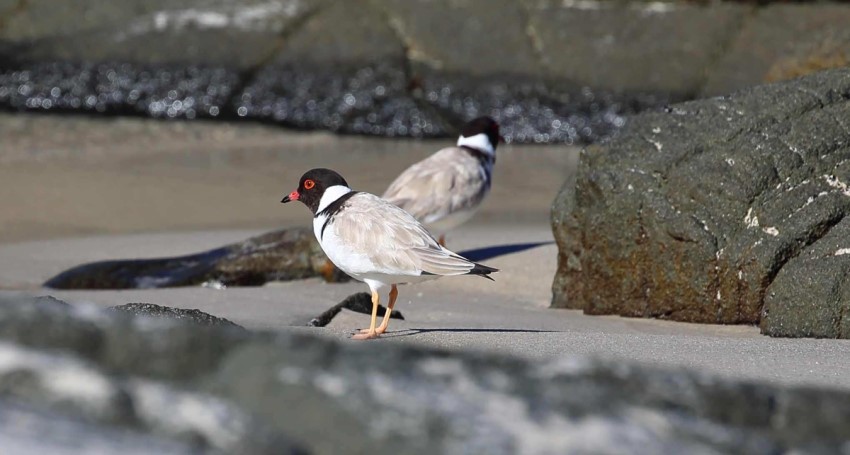
Volunteers have helped restore breeding grounds as part of a targeted control project to give a nationally vulnerable bird species a greater chance of survival.
With less than 70 hooded plovers left in the Fleurieu region, the focus was placed on improving breeding habitats to increase the population.
Begun in 2021, the Our Plover Coast Project has successfully planted native plant species such as rolling spinifex, which is the ideal nesting habitat for the small shorebirds, in dunes that were under threat from storm surges and weed incursion that reduced the availability of nesting, roosting and foraging areas for the plovers.
Caroline Taylor, a project officer at the Hills and Fleurieu Landscape Board, said the removal of introduced grasses that form densely vegetated areas in the hooded plover breeding beaches, gives the birds more choice for suitable nesting territories.
“Across the duration of the project, 20,000 plants will be planted across the 20 identified sites following weed control by local weed control contractors,” Taylor said.
She said that the introduced grasses caused the dunes to unnaturally develop steeper sides that limit the ability of the small birds to seek shelter in them.
“Dunes with introduced grasses develop steeper and higher dune heights due to their growth habits than those dominated with local native spinifex plants,” Taylor said.
“Lower, less steep dunes provide habitat for nests and allow hooded plover chicks to retreat into the dunes when under threat from predators or during high tides and storm surges.”
Taylor said planting out the dunes with more than 8,000 native species over the 2022 winter season brought together land managers, project partners and multiple volunteer groups across the Fleurieu, all of which contribute thousands of hours to protect the vulnerable bird.
“Signage has been installed at all sites which have had weed control or planting undertaken to help local communities understand what is happening at their local beach,” she said.
This communal effort was aided after a National Tree Day event, where volunteers and Fleurieu Environment Centre members planted more than 1,500 native seedlings in the dunes.
“This event enabled the local community to learn more about the project and how they were contributing to the conservation of hooded plovers at their beach and more broadly on the Fleurieu,” Taylor said.
Taylor said they first studied the best weed control methods for each weed species before implementing their findings across multiple sites and then sharing their findings with other people doing similar work.
“Other land managers are implementing similar projects to work across regions such as Onkaparinga, Green Adelaide and Limestone Coast Landscape Boards to improve hooded plover habitats,” she said.
“Experience and learnings from this project are actively being shared with these project partners.”
The project has also increased suitable habitat, food resources and shelter for a range of other animals that utilise the dunes, including invertebrates, small reptiles and both migratory and resident shorebirds.
Words: Brad Noske
Image: Peter / flickr



